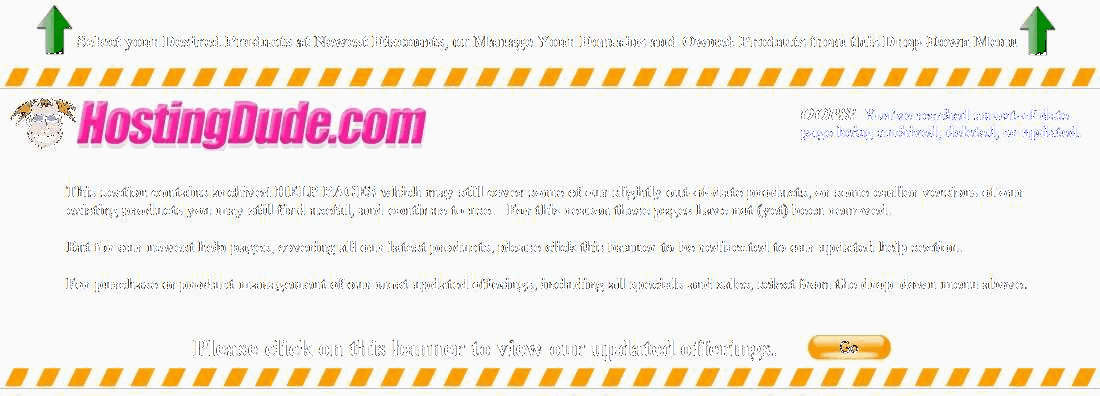Moving Your WordPress Site to Us from Another Host
There are different ways to move your WordPress® site between hosts. This option moves themes, posts, pages, comments, plugins, custom fields, categories, and tags. If your WordPress site's URL is staying the same, we recommend using this method to move it.
Before you start, you need:
• Access to your existing phpMyAdmin account
• FTP access to your existing WordPress site
• Access to the DNS settings for your domain name
• An active Web Hosting account with us (Linux is recommended)
1. Downloading Your Existing Site from the Other Hosting Company
To export and download WordPress blogs from your current host, you need to back up your existing database and have access to the WordPress files on your existing server.
To Download Your Existing Site from the Other Hosting Company
- Log in to your account with the other hosting company and generate a MySQL export from your phpMyAdmin screen. You might need to review their help articles or contact them to accomplish this step. For more information, see the WordPress codex.
- Save the MySQL export file to your local machine.
- Connect to your existing hosting account using File Transfer Protocol (FTP). For more information see What is File Transfer Protocol (FTP)?
- Download a copy of your WordPress website's files, including the three main WordPress folders: wp-admin, wp-content and wp-includes. You need to download all root files. These typically have wp- in the name.
2. Setting Up Your New Hosting Account
To import and upload your WordPress blog to our servers, you need to access the new hosting server and database.
To Set Up Your New Hosting Account
- Set up WordPress on your hosting account, if it isn't already. For more information, see Installing WordPress on Your Hosting Account.
- Write down the MySQL Name/Username and Password. You need this later.
- Write down the host of your MySQL database. For more information, see Viewing Your Database's Details.
- On your local machine, open the the previously saved folder that contains your WordPress website's files.
- Locate the wp-config.php file in the root directory of your WordPress folder, and then open it using a text editor program such as Notepad.
- Locate the following string of code:
/** The name of the database for WordPress */
define('DB_NAME', 'CoolExample');
/** MySQL database username */
define('DB_USER', 'CoolUsername');
/** MySQL database password */
define('DB_PASSWORD', 'CoolPassword');
/** MySQL hostname */
define('DB_HOST', 'CoolHostname');
- Replace the Database Name, seen here as CoolExample with the Database Name/Username that you created during the previous steps. Make sure you keep the single quotes around the name you type.
- Replace the Database Name/Username, seen here as CoolUsername with the Database Name/Username that you created during the previous steps. Make sure you keep the single quotes around the name you type.
- Replace the Database Password , seen here as CoolPassword with the Database Password that you created during the previous steps. Make sure you keep the single quotes around the name you type.
- Replace the Database Hostname, seen here as CoolHostname with the Database Hostname that you noted during the previous steps. Make sure you keep the single quotes around the name you type.
- Save this file to your computer as wp-config.php.
- Upload a copy of your website's files to the root directory of the WordPress website. For more information, see Uploading Files to Your Website (FTP).
NOTE: You are uploading your website's files that you saved to your computer earlier from your other host. Do not upload the folder containing your website. Make sure you just upload all files inside the folder.
3. Restoring Your Database
To complete the migration, you need to import the database from your old hosting account to your new one. For more information, see Importing SQL Files into MySQL Databases Using phpMyAdmin.
Things to Consider
Before your site can be live on the Internet, you need to update your DNS, which brings your current blog offline. See Setting Nameservers for Your Domain Names for more information.
Sometimes you need to update broken links when you move your WordPress site to a new server. If you find broken images and hyperlinks throughout your site when it's back online, you might need to clean your site of outdated link paths. For more information, see Fixing Permalink Issues with WordPress.
In addition to manually moving your site, you can try using a plugin designed specifically for transferring WordPress sites. Here are a couple of plugins our Support team uses when they help customers migrate their sites:
Duplicator
Backup and Move Plugin
Other Resources
You can find more help at the WordPress website, which offers resources on these subjects:
Editing wp-config.php
Using Permalinks
WordPress Backups
Login Trouble
NOTE: As a courtesy, we provide information about how to use certain third-party products, but we do not endorse or directly support third-party products and we are not responsible for the functions or reliability of such products.





